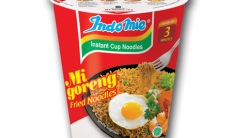Unraveling thread of history
Scranton Times-Tribune
If you want to get an idea of how big the garment industry was in the region in the 1960s and 1970s, South Scranton resident Jerry Birtell has a suggestion: Just open the obituary section.
You’ll find sewers, bushelers, pressers, closers and other workers who devoted years of their lives to manufacturing clothing. And while it’s not yet time to write an obituary for the industry itself, the Pennsylvania Historical and Museum Commission decided this year it was time to give it a memorial.
The commission unveiled a marker Friday on South Main Street in Pittston across the street from the former headquarters of the International Ladies Garment Workers Union.
State Rep. Thomas Tigue, D-Hughestown, who spoke at the dedication, told a group of about 20 retired garment workers at the dedication that they were part of history.
“When the mines started slowing down and finally closed, many of you sitting here this afternoon went out and worked so your family could keep its quality of life,†Mr. Tigue said. “It’s because of the garment industry that we were able to keep people here, keep families together, pay the bills, and have a quality of life.â€
To Mr. Birtell, who has worked in the garment industry since 1968, the memorial is a much-deserved recognition of a major era in the region’s history.
“We were a coal town, then we turned into a textile town, and now we’re just hanging in there,†Mr. Birtell said.
Today, Mr. Birtell works as a supervisor at Alperin Inc., a garment factory in Old Forge that employs about 120 workers and survives on contracts with companies that require American-made clothing, such as uniforms for the U.S. Postal Service.
The factory is one of the few remaining in the area since the industry shifted to imports from overseas, where labor is much cheaper, said Diana Brown, Alperin director of operations.
Today, the U.S. Department of Labor lists a total of about 800 garment industry workers in the greater Scranton-Wilkes-Barre area.
But Ms. Brown and Mr. Birtell remember a time, back in the ’70s and early ’80s, when the Alperin family owned three factories, two warehouses and a cutting room, and counted 13 of Mr. Birtell’s relatives among its approximately 800 workers.
Garment glory days
In 1968, the International Ladies Garment Workers Union had 6,000 members in 97 shops in the Scranton area, more than 7,000 members in the Wilkes-Barre-Hazleton-Pottsville area, and about 4,000 members in the Pittston area.
In those glory days of the garment industry, Ms. Brown recalls the factories recruiting directly from the high schools and young women signing up eagerly.
“It was perfect for working women because you could leave to have your children, and later, you already had the skills and you could come back to work,†he said.
Speaking at Friday’s dedication, state Sen. Raphael Musto, D-Pittston Township, recalled how his wife began working at the dress factory when she was in high school, starting work each day when school let out at 12:30 p.m., and continued to work there for many years.
“That second paycheck helped pay the mortgage and helped us buy a car,†Mr. Musto said. “That’s how we lived at the time.â€
Shirley Grabosky, a retired garment industry worker and historical commission member, said in the late 1970s and early 1980s, Pittston had garment “factories on every corner.†If workers were dissatisfied with working conditions, they could simply pick up and go to another factory, and the union frequently reminded workers — and their employers — of this fact, Ms. Grabosky said.
This flexibility convinced Scranton resident Cindy Birtel to get a job at Family Garment in Scranton as a high-schooler in 1970. Three-and-a-half decades later, Ms. Birtel is still working for the industry. Today, she sets zippers in jumpers and skirts for Alperin.
“We’re a bunch of diehards,†she said of herself and her coworkers, many of whom are close to 50 or older.
In the smoky Alperin cafeteria, Ms. Birtel and five other women took some time last week to reflect on their work for the industry. When asked why they had stayed so long, the answer from the group of women came out in a chorus: Benefits.
Workers cited health care, vacations and flexibility for working mothers as perks of working for the industry.
But this was not always the case.
Sweatshop beginnings
In 1933, Scranton Times reporter Elizabeth R. Lynett, the daughter of publisher E.J. Lynett, went undercover as a busheler (a person who cuts the threads on trousers and adds finishing touches) at three area factories. She worked at the Pell DiMauro Manufacturing Company at 315 Cherry Street, which had been in Scranton only two months; the Faultless Pants Company at 901 Pittston Avenue, which had been in the city about three years, and the Dutchess Underwear Corporation in Old Forge.
In a series of articles, Ms. Lynett exposed working conditions in the factories, including long hours, low wages, turned-back time clocks, relentless bosses and “indescribably filthy†rest rooms. The first of the articles revealed the way the Pell DiMauro company profited by requiring workers to commit to a week without pay for training she said took about five minutes, then exposing them to a work environment that caused many to quit before receiving pay.
Pearl Novak, a retired garment worker, remembers suffering under such conditions as well as the battle fought by the union to improve them. Ms. Novak started work in a garment factory in the 1940s at the age of 15. As a girl, she remembers going on the picket line with her mother, who also worked in the industry, to protest wages of 35 to 40 cents an hour.
Years later, in 1958, Ms. Novak participated in the largest ILGWU strike in union history, in which 100,000 union workers walked out of factories nationwide. Ms. Novak said she had been hurt at work while pregnant and was more than happy to participate in the strike.
“It was rough,†she said. “My boss got out and started yelling. He shoved me against the door.â€
Gradually, with the help of the union, conditions began to improve, Ms. Novak said.
“The union really cleaned it up,†she said. “The factories were cleaned up, and we got paid vacations and holidays.â€
It was these improvements brought about by the ILGWU, won slowly through strikes and negotiation, that set the stage for the industry to thrive in the ’60s and ’70s, Ms. Brown said.
Union pride
Today, all of the workers at Alperin, Inc. are members of UNITE HERE, a union which formed by combining the ILGWU with another textile union and, later, with a hotel and restaurant employees union. Occasionally, they stop to think about what the unions have done for their industry throughout the years, including negotiating holidays and personal days and improving health care.
“When I go shopping, I do try to look for clothes that are union-made, but they’re hard to find,†said Alperin worker Dee Thomas.
Asked how they felt about the historical marker, Alperin’s workers said they were amazed that it had taken this long to put one up.
“A lot of people look down on garment workers, but a lot of people have put their children through college doing this,†said Ruth Gregoire of Moscow.
“To work in a garment factory is one of the hardest jobs you’ll ever have to do,†Ms. Birtel added.
Contact the writer: hkeels@timesshamrock.com
Clem Lyons remembers when the International Ladies Garment Workers Union members took part in millinery classes and calisthenics in the Pittston union hall.
The members also learned about politics.
“We tried to keep them informed of what was going on in politics both in the state and the country,†said Miss Lyons, a former garment worker and retired ILGWU business agent in Luzerne County.
The union was a force of reckoning for most of the 20th century. In Greater Pittston, some 50 to 60 factories operated, according to various accounts, employing about 7,000 workers in Pittston alone during the 1970s.
Miss Lyons, who worked at Emkay Manufacturing in West Wyoming for nine years, beginning in 1946, led a group of women who wore their bathing suits to picket their employer at his New York City showroom in 1953 over unfair labor practices. They tied up traffic and found themselves before a judge for wearing swim suits more than 300 yards from the nearest swimming pool. But Miss Lyons charmed the Irish judge, and the women got off with a suspended sentence.
The union even had a vacation and education resort called Unity House, in what is now the Mountain Laurel Center, in Bushkill from 1918 to 1989, said Kenneth C. Wolensky, Ed.D., a historian with the Pennsylvania Historical and Museum Commission and co-author of the book entitled “Fighting for the Union Label: The Women’s Garment Industry and ILGWU in Pennsylvania.â€
Dr. Wolensky said there were about 160 garment factories in the Wyoming Valley and about 150 in the Lackawnna Valley.
But the once powerful union began to lose mem-
bers when garment jobs began going overseas.
“When I left in ’83, there
were still 60 shops in Pittston,†said Miss Lyons, 85, of Wyoming. “Right after that, it went downhill because of what happened in Washington and Harrisburg. It was good for the economy to have
those places.â€
In 1995, ILGWU merged with the Amalgamated Clothing & Textile Workers Union to form the Union of Needletrades, Industrial and Textile Employees, or UNITE.
“The ILGWU by that time had lost so many members,†Dr. Wolensky said.
He said the membership nationally had gone from 600,000 members 25 years ago to 50,000. At one time, the union had 21,000 members in the Wyoming and Lackawanna valleys, he said.
He said UNITE recently merged with the Hotel Employees and Restaurant Employees International Union, or HERE.
Contact the writer: jsylvester@timesshamrock.com
‘Union Label’
International Ladies Garment Workers Union anthem
Words by Paula Green
Music by Malcolm Dodds
Look for the union label
When you are buying a coat, dress or blouse.
Remember somewhere our union’s sewing
our wages going to feed the kids and run the house,
We work hard but who’s complaining.
Thanks to the I.L.G. we’re paying our way.
So, always look for the union label,
it says we’re able
to make it in the U.S.A.





